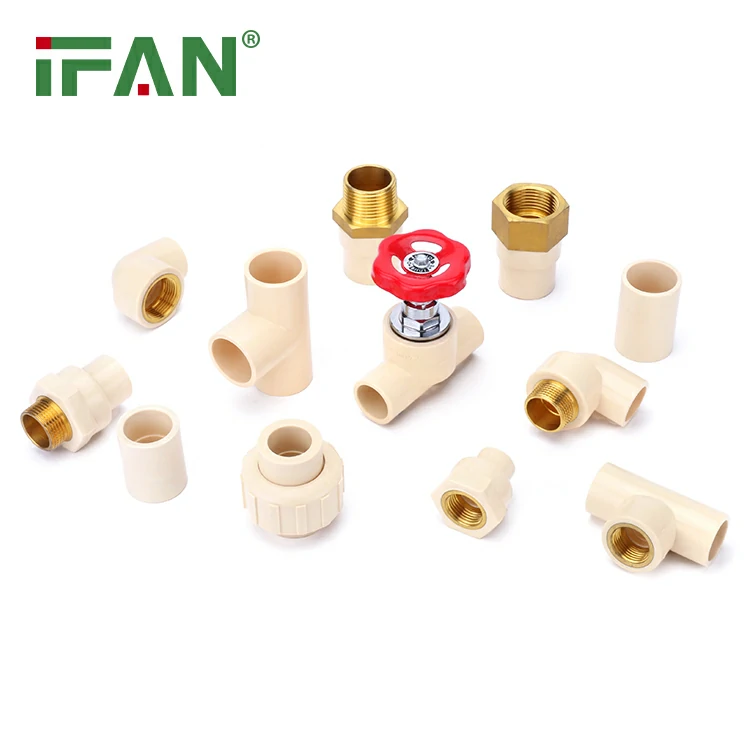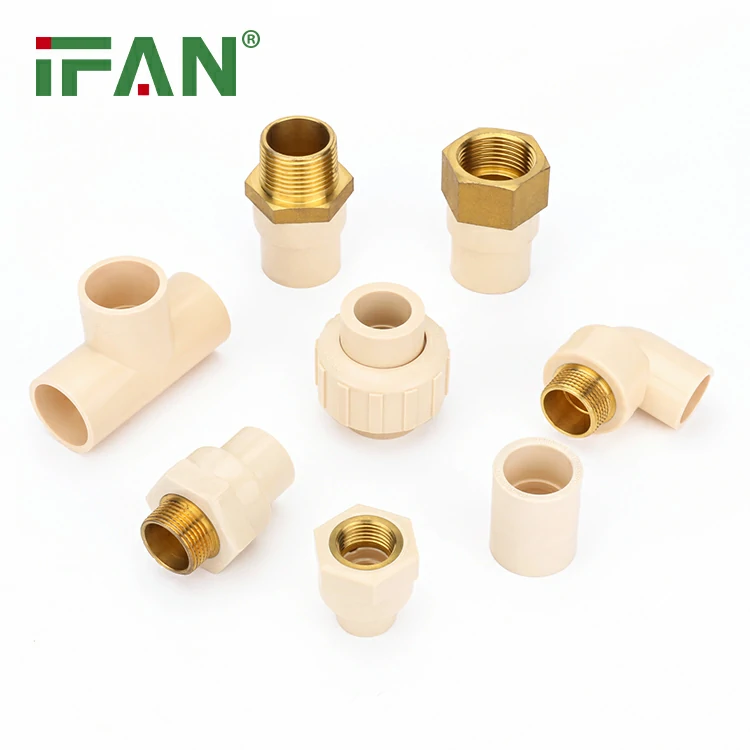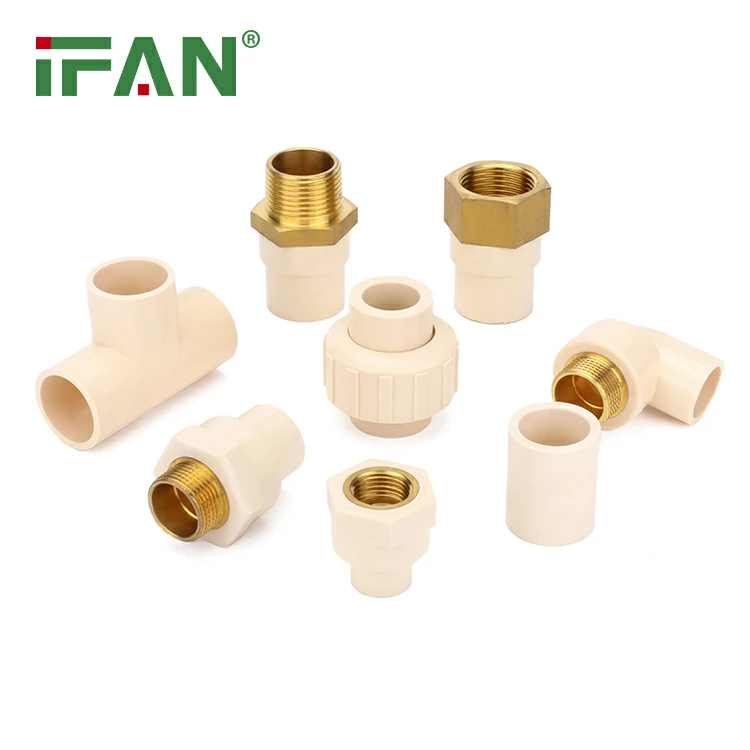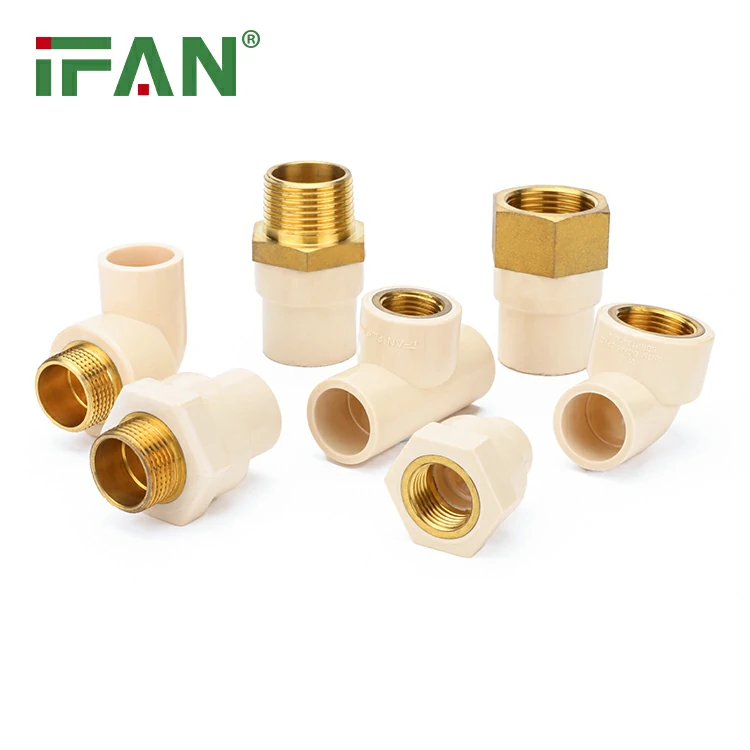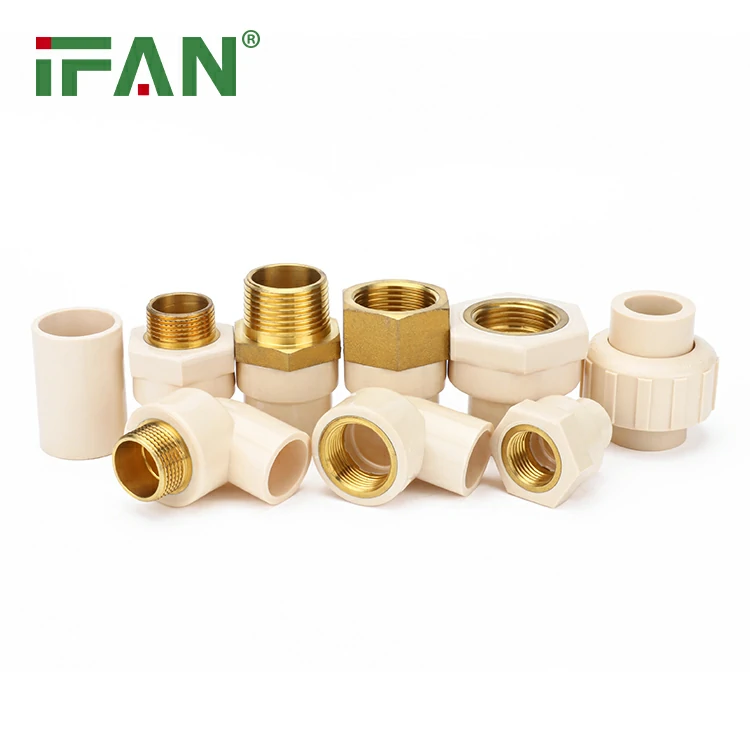IFAN Full Variety CPVC Pipe Fitting
Category : Click Download
Whatsapp : +86 19884503412
Wechat : 19884503412
Description
Introduction to CPVC Pipe Fittings and Joining
CPVC stands for chlorinated polyvinyl chloride, a popular material for plumbing hot and cold water systems.
A CPVC Pipe Fitting is joined using a chemical welding process rather than mechanical methods like threading.
Unlike traditional glue, CPVC joints use solvent cement, which chemically softens and fuses pipe surfaces.
This ensures a strong, leak-proof bond that’s durable and safe under pressure.
Selecting the correct type of cement is crucial for system performance and code compliance.
What Is CPVC Solvent Cement?
CPVC solvent cement is a specially formulated adhesive designed to bond CPVC materials at a molecular level.
It temporarily dissolves the surfaces of the pipe and fitting to form a unified connection.
When applied to a CPVC Pipe Fitting, the cement creates a single structure with no visible seam.
This process is known as solvent welding, not simply gluing.
It differs from PVC or ABS cement in both composition and temperature tolerance.
Always choose cement specifically marked for CPVC use.
Types of CPVC Cement and Color Codes
There are several types of CPVC cement, often color-coded for easy identification.
Yellow cement is the most common for residential CPVC water systems.
Orange cement is used for industrial or high-temperature CPVC applications.
Some cements are universal and work with both PVC and CPVC but must meet performance standards.
For any CPVC Pipe Fitting, using the right cement ensures proper bonding strength and longevity.
Avoid using PVC-only glue, as it lacks the correct solvent strength for CPVC material.
Choosing the Right Cement for Your System
When selecting glue for a CPVC Pipe Fitting, consider temperature, pressure, and system type.
For potable water systems, choose cement that is NSF 61 certified for drinking water applications.
For hot water lines, ensure the cement is rated for temperatures up to 180°F (82°C).
Industrial systems may require special chemical-resistant cement formulas.
Always check the label and consult the manufacturer’s specifications.
Using the wrong glue can cause leaks, joint failure, or even void warranties.
Primer: Is It Necessary?
Primer prepares the surface for solvent cement by cleaning and softening the plastic.
Although not always required for a CPVC Pipe Fitting, primer improves bonding in high-stress or dirty environments.
Some local plumbing codes mandate the use of primer, especially under the Uniform Plumbing Code (UPC).
Primer is typically purple or clear and applied before the cement.
Even if optional, using primer adds extra reliability to your connection.
Always follow local regulations and product instructions.
Step-by-Step Application Process
Begin by cutting the CPVC pipe square and removing burrs with a deburring tool.
Dry-fit the pipe and CPVC Pipe Fitting to confirm alignment before applying cement.
Apply primer (if required) to both pipe and fitting socket.
Then apply a generous, even layer of CPVC cement.
Quickly push and twist the pipe into the fitting while the cement is still wet.
Hold the joint for 30 seconds and wipe away excess cement.
Let the connection cure for at least 15 minutes before handling, and up to 24 hours before pressurizing.
Common Mistakes and How to Avoid Them
Using the wrong type of cement is the most common mistake in CPVC installation.
Never use PVC or ABS cement on a CPVC Pipe Fitting.
Avoid joining wet or contaminated surfaces, as moisture prevents proper bonding.
Don’t allow cement to dry before inserting the pipe—it must be joined immediately.
Excessive cement application can also weaken the joint and clog the pipe.
Follow temperature and humidity guidelines on the cement label for best results.
Final Recommendations and Best Practices
Always store CPVC cement and primer in a cool, sealed container to maintain effectiveness.
Use products that are clearly marked for CPVC and certified for your specific application.
Read and follow the manufacturer’s instructions for each CPVC Pipe Fitting job.
If uncertain, consult a licensed plumber or refer to plumbing codes.
Taking the time to choose and use the right glue ensures a strong, long-lasting plumbing system.
Safety, reliability, and compliance depend on using proper solvent welding techniques. View more:https://www.ifanfittings.com/
相关产品
- PVC Pipe & Fittings
Beige CPVC Seated Female Socket
- PVC Pipe & Fittings
Beige CPVC Brass Male Elbow
- PVC Pipe & Fittings
Beige CPVC 45 Degree Elbow
- PVC Pipe & Fittings
Beige CPVC Socket
HAVE ANY QUERIES? SEND TO CONTACTOANTSMACHINE.COM
ONTACT US

